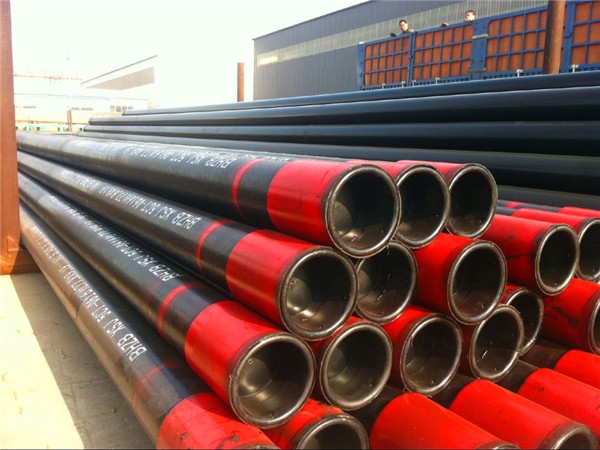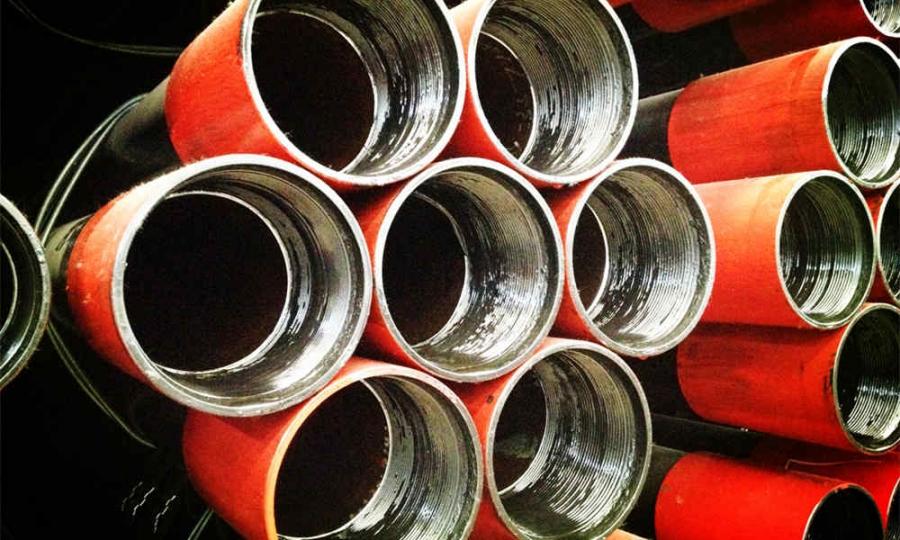OCTG Pipes: Supporting Reliable Oil and Gas Operations
OCTG pipes, encompassing drill pipes, casing, and tubing, are indispensable in the oil and gas sector, constituting about 60% of total pipe usage. They play pivotal roles in drilling, production, and transportation, ensuring the safe and efficient extraction and conveyance of hydrocarbons. Valued at over $21 billion in 2022, the global OCTG market underscores their crucial role in upholding operational integrity and mitigating risks in challenging operational conditions.

Understanding OCTG Pipes
Definition and Components of OCTG (Oil Country Tubular Goods) Pipes
OCTG pipes, known as Oil Country Tubular Goods, are indispensable in the oil and gas sector, primarily for drilling, production, and transport operations. This category includes three key components: drill pipes, casing, and tubing. Drill pipes facilitate drilling by rotating the drill bit and circulating drilling fluid. Casing lines the drilled well to prevent collapse and stabilize the borehole. Tubing runs inside the casing, transporting oil and gas from the reservoir to the surface for processing.
Types of OCTG Pipes: Casing, Tubing, and Drill Pipes
OCTG pipes are classified into three main types based on their specific functions:
- Casing Pipes: These reinforce and support the wellbore during drilling and completion processes, ensuring structural integrity and preventing cave-ins.
- Tubing Pipes: Positioned within the casing, tubing pipes convey hydrocarbons from the reservoir to the surface facilities for processing.
- Drill Pipes: Heavy-duty seamless pipes that rotate the drill bit and circulate drilling fluid during the drilling operation, crucial for wellbore advancement.
Each type of OCTG pipe serves a critical role in the efficient extraction and transport of oil and gas resources.
Materials Used in Manufacturing
Cangzhou Shenlong manufactures OCTG pipes using robust materials chosen for their resilience and longevity in demanding environments. Common materials include J55, K55, N80, L80, and P110 grades of steel. These materials are selected based on their ability to withstand high pressures, corrosive elements, and extreme temperatures typical in oil and gas operations. Shenlong adheres to stringent API standards throughout production, ensuring each pipe undergoes rigorous non-destructive testing (NDT) to guarantee quality and reliability. With over two decades of experience, Shenlong's commitment to superior manufacturing practices ensures their pipes meet the stringent demands of the industry.
Applications of OCTG Pipes in Oil and Gas Operations
Line Pipe
1) Type: Seamless Pipe and Welded Pipe
Line pipes are pivotal in transporting fluids like oil, gas, and water across vast distances. They are available in seamless and welded variations, with seamless pipes offering superior pressure resistance, ideal for high-pressure environments, while welded pipes are more economical for lower-pressure applications.
2) Connection: Welded Ends, Coupling Connection, Socket Links
Line pipes feature versatile connection methods such as welded ends, coupling connections, and socket links, ensuring adaptability to diverse operational needs and environments.
3) Materials: L245, L360, GR.B, X42, X52, X60, X70 etc.
These pipes are fabricated from varying grades of steel like L245, L360, GR.B, X42, X52, X60, and X70, selected for their durability and suitability across different pressure and environmental conditions.
4) Size: 21.3 - 2032 mm
Line pipes are available in a wide range of sizes, from 21.3 mm to 2032 mm in diameter, catering to the diverse needs of oil and gas transportation infrastructure.
5) Application: Oil and Gas Industry for Oxygen, Water, and Oil Pipelines
They are extensively employed in the oil and gas sector for transporting oxygen, water, and oil, critical for maintaining operational efficiency and reliability.
Tubing and Casing
1) Materials: J55, K55, N80, L80, P110 etc.
Tubing and casing pipes are constructed from durable materials such as J55, K55, N80, L80, and P110 grades of steel, selected for their robustness and resilience in harsh operating conditions.
2) Specification: 1 1/2" - 20"
These pipes are available in various specifications, ranging from 1 1/2" to 20" in size, tailored to specific requirements for well completion and production.
3) Category: Not Upset Tubing (NU), External Upset Tubing (EU), The Overall Joint Tubing (IJ)
Tubing is categorized into different types, including not upset tubing (NU), external upset tubing (EU), and overall joint tubing (IJ), each designed to meet specific operational needs and challenges.
4) Application: Wells Used for Liquid Production or Injection
Tubing and casing pipes are essential components within wells, facilitating the production or injection of liquids critical for efficient oil and gas operations.
Manufacturing Process of OCTG Pipes
Overview of the Manufacturing Steps
The manufacturing process of OCTG pipes commences with the meticulous selection of high-quality raw materials, primarily high-grade steel. These materials undergo advanced processing techniques, including seamless or welded pipe production methods. Seamless pipes are formed through heating and piercing the steel to create a seamless tube, ensuring superior structural integrity. Welded pipes, on the other hand, involve rolling steel sheets into tubes and welding the seams to form robust pipe structures. Additional processes such as heat treatment and surface finishing further enhance the pipes' durability and corrosion resistance, ensuring they meet stringent industry standards.
Quality Control Measures and Standards in OCTG Pipe Manufacturing
Ensuring the highest standards of quality is paramount in OCTG pipe manufacturing. Cangzhou Shenlong implements rigorous quality control measures throughout the production process. This includes comprehensive non-destructive testing (NDT) procedures to detect any defects or imperfections in the pipes. Adherence to API standards guarantees that each pipe meets the necessary specifications for safety, performance, and durability. With over two decades of expertise in the industry, Shenlong's commitment to quality assurance ensures their OCTG pipes deliver exceptional reliability and performance in challenging oil and gas environments.
Key Considerations in Selecting OCTG Pipes
Factors Influencing the Choice of OCTG Pipes
Choosing the right OCTG pipes involves assessing several critical factors. These include specific operational requirements like well depth, the nature of hydrocarbons being extracted, and the anticipated lifespan of the well. Mechanical properties such as tensile strength and toughness are also crucial to withstand the rigors of drilling and production processes effectively.
Environmental Conditions
Environmental factors play a pivotal role in OCTG pipe selection. Pipes used in environments with high levels of corrosive substances like hydrogen sulfide (H2S) or carbon dioxide (CO2) require materials that offer superior corrosion resistance. This ensures prolonged operational integrity and minimizes the risk of premature failure.
Operational Requirements
Operational considerations, such as pressure and temperature, are paramount when choosing OCTG pipes. These pipes must endure the extreme pressures and temperatures encountered in deep wells or high-temperature reservoirs. Selecting pipes that meet these rigorous operational demands is essential for maintaining safety and efficiency during extraction processes, reducing the potential for critical failures.
Regulatory and Safety Standards Compliance
Adherence to regulatory and safety standards is fundamental in OCTG pipe selection. Pipes must meet stringent criteria set by industry bodies like the American Petroleum Institute (API) to ensure they are safe and reliable for use in oil and gas operations. Compliance with these standards guarantees that the pipes can perform consistently under diverse operational conditions, safeguarding the well's integrity.
Challenges and Solutions
Common Challenges in OCTG Pipe Usage and Maintenance
OCTG pipes encounter various challenges, including corrosion, mechanical wear, and operational stresses. Maintenance complexities, such as inspecting and repairing pipes in deep wells, pose additional challenges. Ensuring these pipes remain durable and reliable over their operational lifespan remains a continuous endeavor in the oil and gas sector.
Innovations and Technologies Addressing These Challenges
Innovative technologies are continuously evolving to tackle OCTG pipe challenges effectively. Advanced materials and coatings enhance corrosion resistance, prolonging pipe lifespan. Modern inspection techniques, such as non-destructive testing (NDT), improve defect detection early, mitigating potential failures. Integration of smart technologies and IoT enables real-time monitoring of pipe conditions, facilitating proactive maintenance strategies to minimize downtime and operational risks.
Oil Country Tubular Goods Quality Inspection
1.Experimental Testing Center: Our facility includes a dedicated experimental testing center accredited by CNAS, ensuring rigorous quality assessment of OCTG pipes.- 2.Strict Quality Control: We maintain stringent quality control measures with dual inspections: initial checks on the production line and comprehensive evaluations of production quality. This ensures that only pipes meeting the highest standards are delivered to our customers.
- 3.International Certifications: Our products hold international certifications such as ISO, CE, and LR, affirming their quality and compliance. We also facilitate third-party testing by renowned agencies like SGS and BV, reinforcing our commitment to delivering superior-quality OCTG pipes.
Final Words
OCTG pipes are essential components in the oil and gas industry, encompassing drill pipes, casing, and tubing, and accounting for approximately 60% of total pipe usage. They play a pivotal role in drilling, production, and transporting hydrocarbons, ensuring safe and efficient operations. Cangzhou Shenlong sets a high standard in OCTG pipe manufacturing, employing rigorous quality controls, advanced materials, and adherence to international standards. This commitment underscores the industry's dedication to delivering reliable performance in demanding oil and gas operations.






